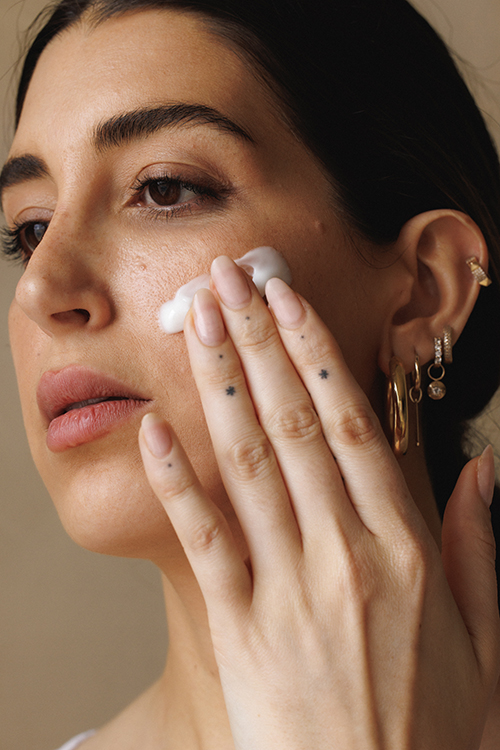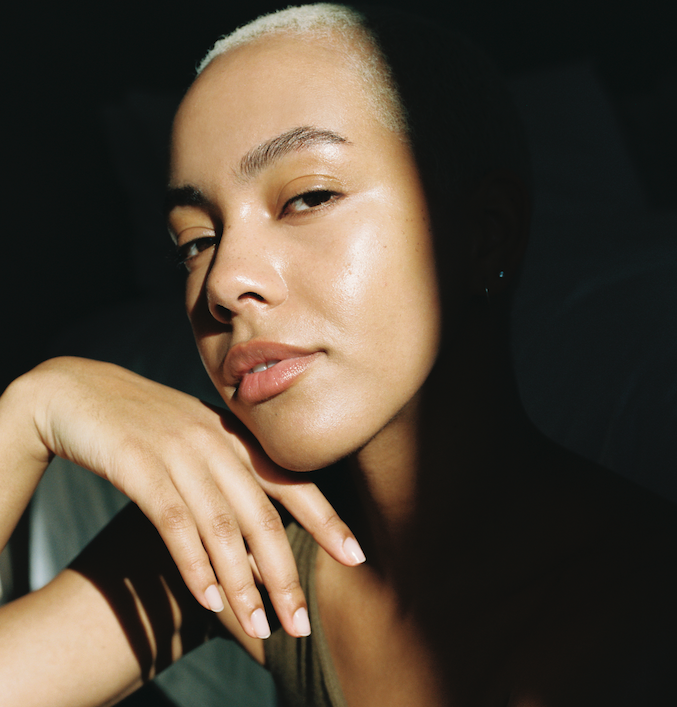Ask a Dermatologist: How To Properly Order Your Skincare Routine
Ask a Dermatologist: How To Properly Order Your Skincare Routine
You have a cabinet full of skincare products, but do not know where to start. The truth is, building a skincare routine in today's world can be overwhelming. You may be inundated with options or feel pressured to develop a lengthy 10-step routine. Even worse, you may not be aware of where each product is supposed to fall in your skincare routine, rendering them virtually ineffective. According to New York City-based board-certified dermatologist Dr. Cameron Rokhsar, properly ordering your skincare products is crucial for optimal effectiveness, especially considering different skincare products have different consistencies. "Layering thicker products first may hinder thinner products from penetrating the skin properly," he says. What good is it if you are spending the time, money and effort into achieving healthy skin if a product does not even have a chance to do its job?

Expert Tip: Thicker than a toner and serum, Zensa Healing Cream fits into the "moisturizer" category of your skincare routine, which is usually the last step (unless it is daytime, in which case you would layer sunscreen over top). Ideal for all skin types, this formula is especially good for those with acne-prone skin since it contains anti-inflammatory calendula oil and calming grapefruit oil. Those with dry skin will also benefit from the conditioning shea butter and plumping hyaluronic acid to deliver an overall hydrated, healthy complexion. It also comes in a travel size for on-the-go hydration.
Generally speaking, you will want to order your skincare routine from thinnest to thickest formula. To learn the ins and outs of layering your skincare products correctly (as well as how to choose products based on your skin type), keep reading.

Step 1: Cleanser
Cleansing is an essential part of your skincare routine as it removes dirt, oil and impurities from the skin to prep it for the products to follow, says Dr. Rokhsar. He recommends cleansing your skin as part of both your morning and evening skincare routine. Those with oilier skin types will find a foam-based cleanser balancing for their skin while drier-skinned people will benefit from a cream cleanser, which tends to be non-stripping. If you have sensitive or acne-prone skin, try a gel-based cleanser — they are typically water-based and more gentle on the skin.
Step 2: Toner
While not everyone needs a toner in their skincare routine, Dr. Rokhsar says it may be a beneficial step for those with oily or acne-prone skin types. "Toners can help balance pH levels after cleansing and aid in better product absorption," he says. Certain formulas can also help manage excess oil production, minimize the appearance of pores or hydrate the skin. Some ingredients to look for in a toner include exfoliating acids (like salicylic or glycolic) if you are looking to target enlarged pores, hyaluronic acid for hydration and antioxidants like pomegranate for anti-aging benefits.
Step 3: Serum
Facial serums are potent formulas containing active ingredients that help target specific skin concerns, be it inflammation, dullness, dark spots or dehydration. A few common ingredients you will find in serums are vitamin C for brightening and hyaluronic acid for plumping and hydrating. Chemical exfoliants (such as alpha-hydroxy acids and beta-hydroxy acids) are also common in serum formulations and should be used sparingly (two to three times a week) to avoid skin sensitivity.
Step 4: Eye Cream
While some people skip eye creams, Dr. Rokhsar notes that they "cater to the delicate skin around the eyes, providing hydration, reducing fine lines, dark circles and puffiness, all while protecting against premature aging." These water-based moisturizers have a thicker, creamier consistency when compared to a serum, and are best applied by dotting a pea-sized amount gently underneath the eyes. All skin types can benefit from an eye cream (oily included) — it is all about finding the right ingredients for your particular concerns. Vitamin C can help brighten up dark circles, while peptides and vitamin A can assist with smoothing out fine lines. If you are really struggling with dryness underneath the eyes, you may find eye balms (which are oil-based and offer more nourishment) a better alternative to eye creams.
Step 5: Moisturizer
Moisturizing is one step of your skincare routine you will not want to skip, no matter what your skin type is. "Moisturizers maintain skin hydration and barrier function," says Dr. Rokhsar, who recommends seeking out formulas containing hyaluronic acid, glycerin or ceramides. Your skin barrier is your skin's first line of defence against damaging aggressors like UV rays, allergens and environmental threats. It also helps seal moisture into the skin and prevent water loss. Moisturizers work to keep the skin barrier intact — without a healthy barrier, the skin is more susceptible to dryness, flakiness and inflammation.
There are several moisturizer formulas available, and the one you choose will vary based on your specific skin concerns. "Occlusives create a barrier to lock in moisture, humectants attract and hold water and emollients smooth and soften the skin's texture," says Dr. Rokhsar. And, if you have oily skin and are worried about moisturizer contributing to excess sebum, Dr. Rokhsar says that this skin type should still use a moisturizer, as proper hydration can actually help balance oil production. "A lightweight, non-comedogenic moisturizer is ideal for oily skin," says Dr. Rokhsar.
Step 6: Sunscreen
Sunscreen is an integral part of any skincare routine, protecting against everything from skin cancer to premature aging. Because sunscreens contain active ingredients that shield against UV rays, they should be applied as the last step of your skincare routine. There are two types of sunscreens: chemical and mineral. While chemical sunscreens convert UV rays to heat and are better for those not wanting a white-cast, mineral sunscreens bounce UV rays off of the skin and are non-comedogenic, meaning they will not clog your pores. Mineral sunscreens also rely on zinc oxide or titanium dioxide, which are sensitive skin-friendly.

Recap
The order of your skincare routine makes a significant impact in how deep your formulas penetrate the skin and thus, how effective they will be for your complexion. Your nighttime skincare routine should consist of the same steps of your daytime routine, but a treatment product, like a retinol, can also be "sandwiched" after serum and before moisturizer.
